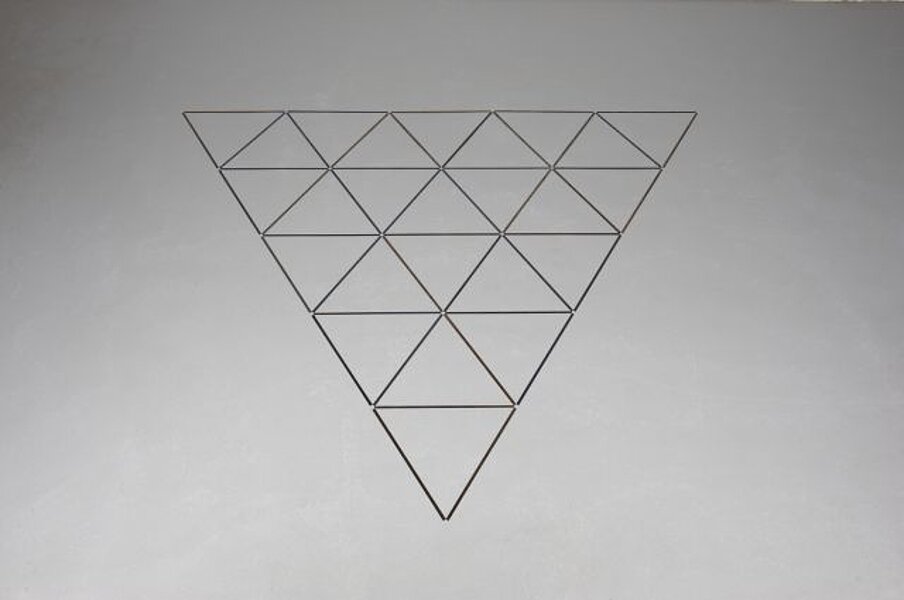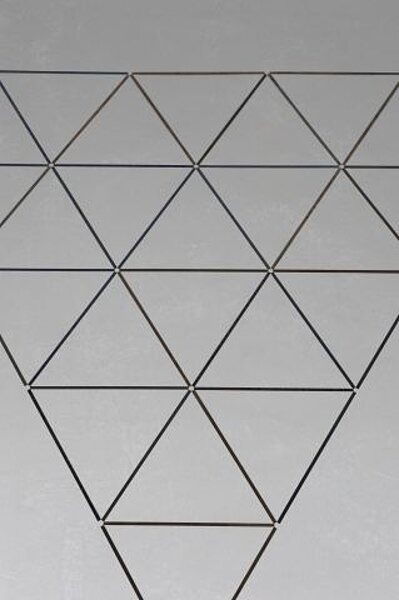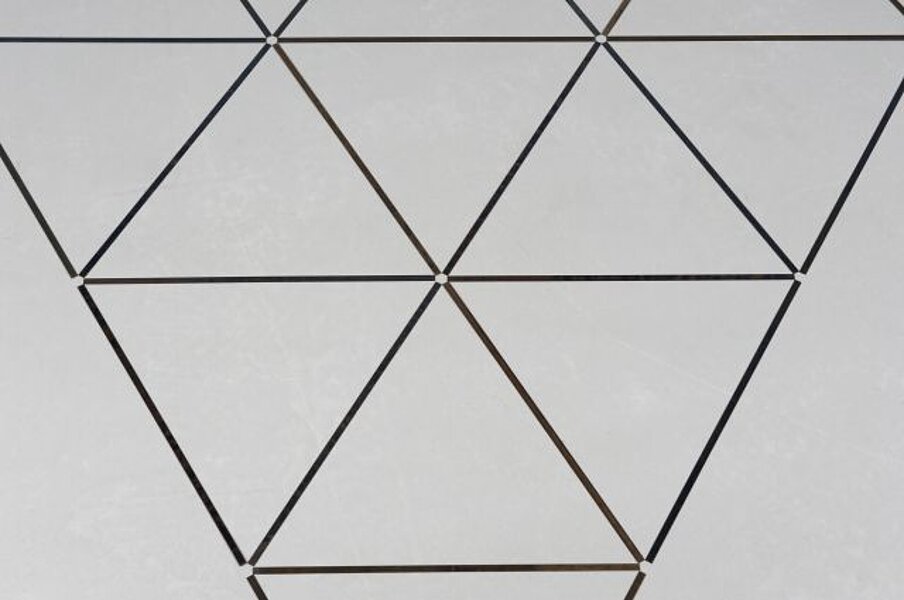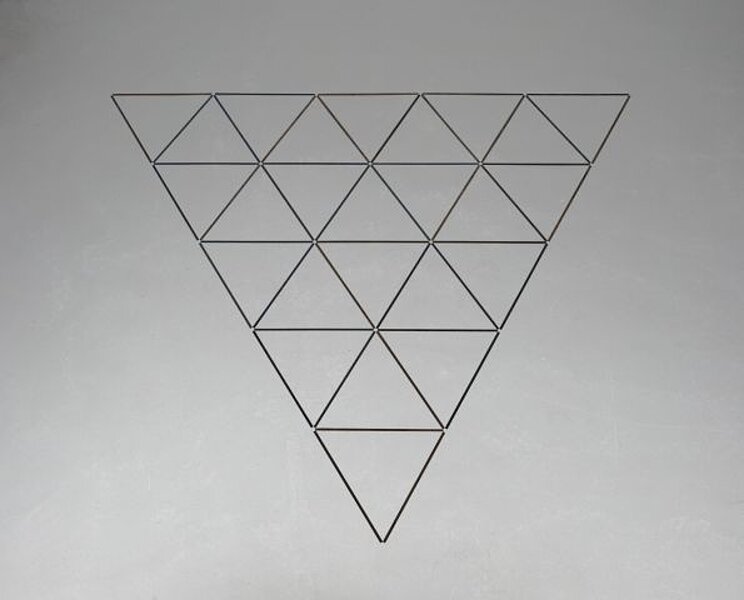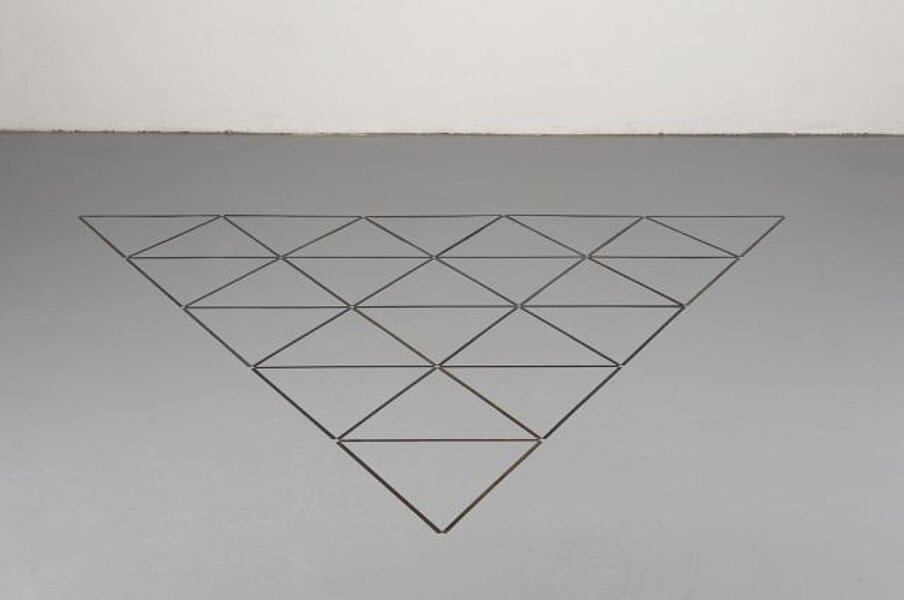
Andre, Carl
5-Segment Triangle
1976
| Object description | Steel |
|---|---|
| Dimensions |
Objektmaß:
width: 200 cm,
depth: 200 cm
|
| Year of acquisition | 1995 |
| Inventory number | P 428/0 |
| Creditline | mumok - Museum moderner Kunst Stiftung Ludwig Wien |
| Rights reference | Bildrecht, Wien |
| Literature | Museum der Wünsche |
US American artist Carl Andre made an ornamental pattern directly on the floor of the exhibition space using 45 steel rods. Three such rods form a equilateral triangle and five of these come together to make one side of the large triangle – the “5 Segment Triangle”. The metal rods only touch at their extremities and produce 25 fields covering the floor in a geometric net. The material, polished steel, is used by Carl André in his work in very different finished forms. The “5-Segment Triangle”, from 1976, is one of a series of very flat objects which began in the 1960s. Carl André intentionally rejected the use of a plinth and placed his objects, some of which are walk-in works, in the middle of the room. This does not only reduce the distance between the art work and us, the viewers. The artwork creates a kind of barrier around which we have to walk and it forces us to perceive the geometric structure differently, depending on where we are in the room. In this dialogue the boundaries between object and room dissolve because our standpoint in the room is always part of the work and has been considered by the artist. In the case of the “5-Segment Triangle” the empty spaces of the internal structure become part of the work: the floor, the interstices, the exhibition space as a whole all become part of our experience of the object. Inversely, the process makes us sensitive to our walking and standing in the space and we can perceive it in a new way. The aesthetic considerations and design principles in Carl André’s works put him in the company of artists such as Dan Flavin, Donald Judd and Agnes Martin and make him one of the most important representatives of US American minimal art. As he himself put it: “I think art is truly an open set. There are no ideal forms to strive for nor hierarchies to obtain to. Things have qualities. Perceive the qualities.”
© mumok – museum moderner kunst stiftung ludwig wien
